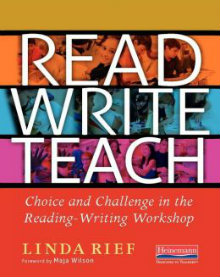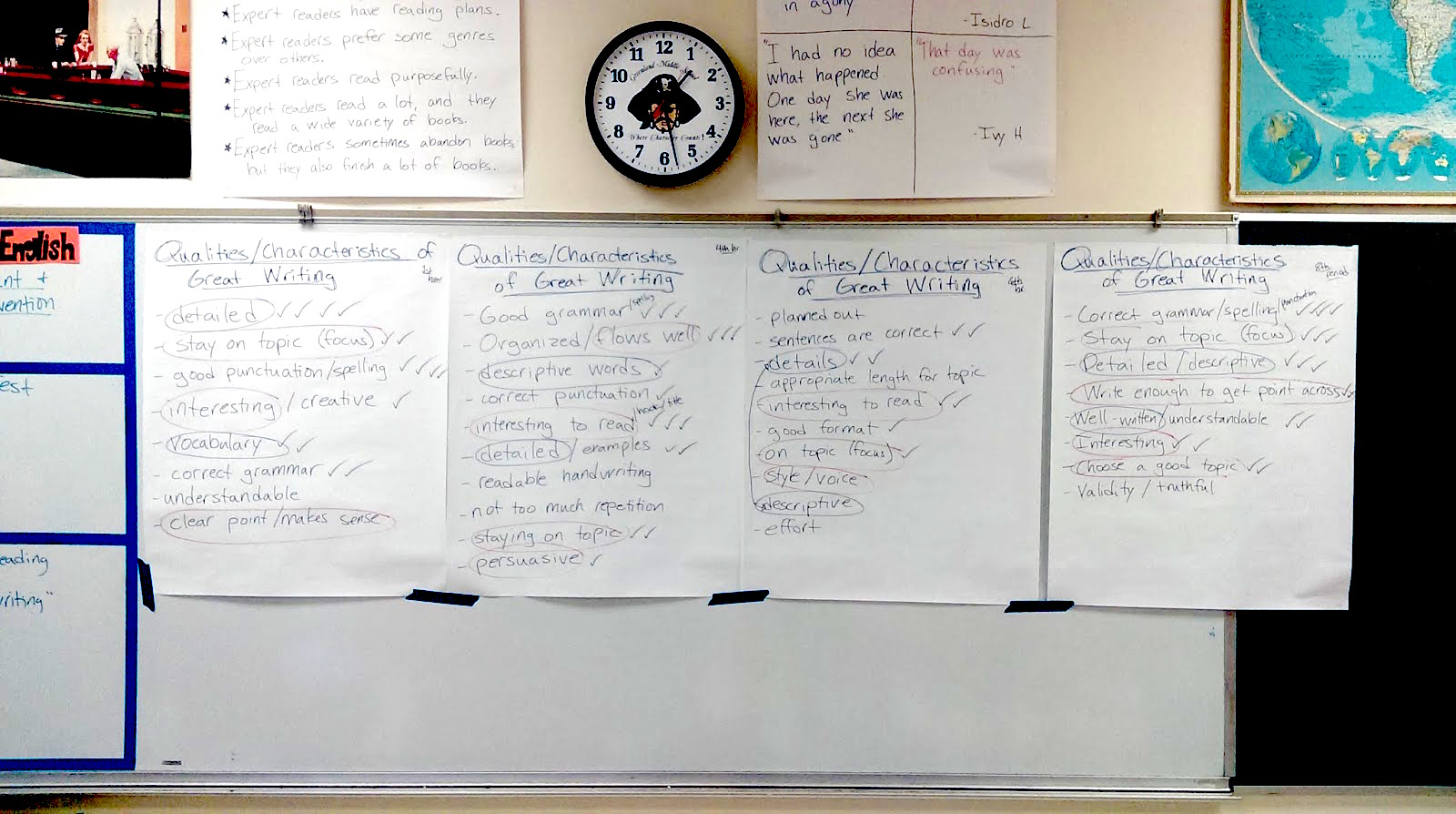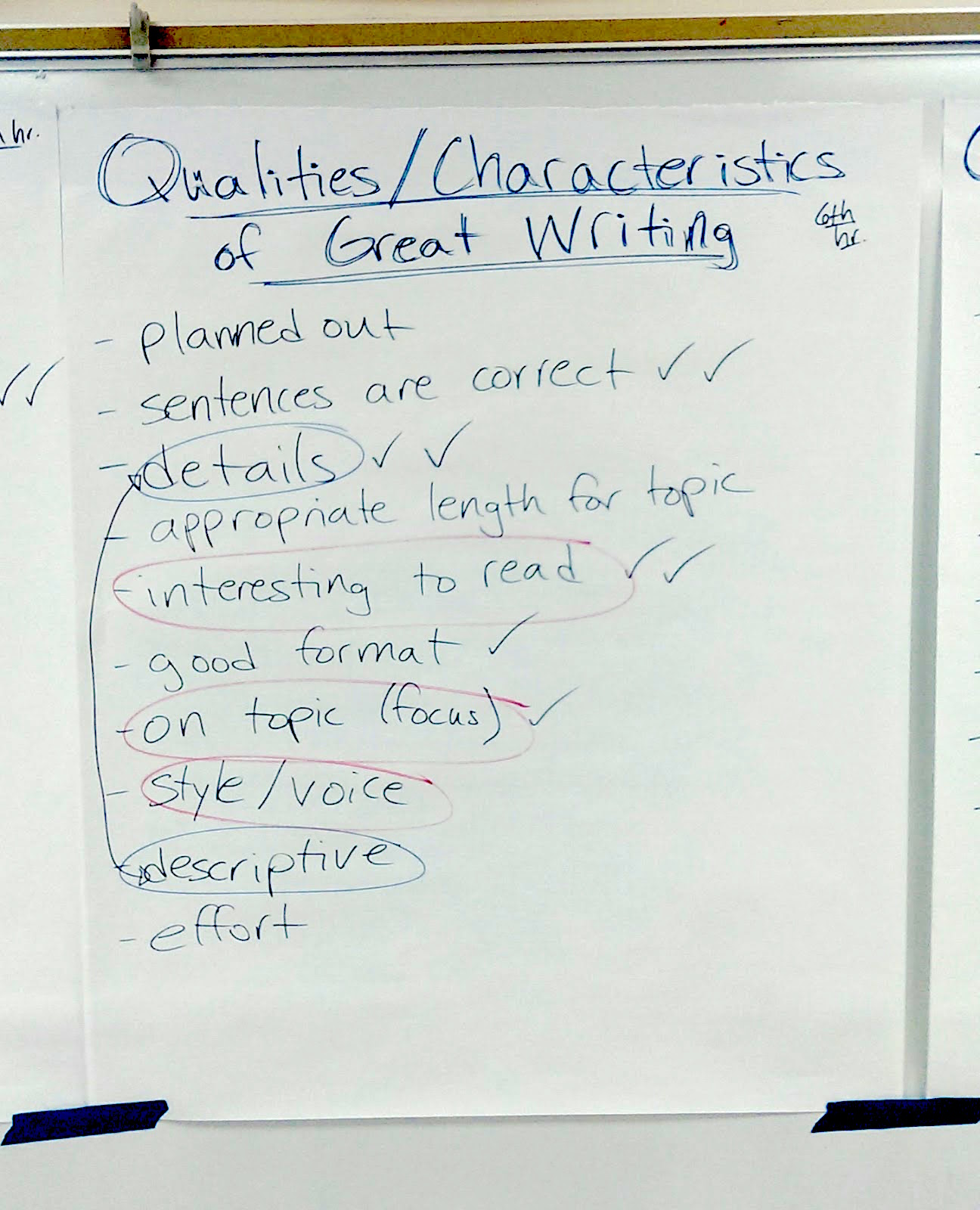How to Succeed in the Workshop Classroom
Read Write Teach: Choice and Challenge in the Reading-Writing Workshop
By Linda Rief
(Heinemann, 2014 – Learn more)

Reading Read Write Teach is like sitting down for coffee with a master teacher that you feel you’ve known for years. Linda Rief is full of experience, advice, and inspiration, which makes this book feel more like a conversation than a book.

This book covers such a huge span of material that I could not possibly include everything in this review (not to mention all of her handouts and electronic resources available on the Heinemann website with the purchase of the book). So, instead, I’ll share one valuable insight I gained from Linda that I used immediately in my classroom.
“Reading 20 pieces of writing” in my classroom
About midway through, in a chapter on reading/writing workshop, Rief describes an activity she just calls “Reading 20 pieces of writing.” For this activity, students spend one or two class periods reading 20 pieces of writing written by real students (samples that the teacher has collected for this purpose).
These pieces of writing do not all have to be amazing examples – as Rief herself puts in, “Some of the pieces won Scholastic Writing Awards. Some won state essay or poetry contests. Some were the first piece the student had ever written that was more than a paragraph long.”
Each student reads each piece individually, then gives it a rating from 1 to 4. Then students look at all of their 4-rated pieces and determine what criteria they used and why they rated those pieces highly. Finally, the teacher and students discuss the criteria together and make an anchor chart with the characteristics of “4” pieces.
I decided to try out this activity with my students at the beginning of a six-week writing workshop unit. I did alter the activity somewhat from Rief’s description. I only asked my students to read twelve pieces of writing, and for every rating they gave, I also asked them to write a short rationale.
When I first read this chapter in Rief’s book, I was worried about how it would work. Would students simple rate the pieces and move on without actually reading them or giving them any thought? Would the list of characteristics my students developed include everything? Would my students actually be able to judge what good writing looks like?
My student buy-in was high
As it turns out, I was worrying in vain. When I framed this activity as a way for my students and me to analyze writing together and develop a list of criteria on an equal playing field, they rose to the challenge. (Click images to enlarge.)
When Rief describes this activity in her book, she mentions this importance of students seeing their own wording in the list and not that of some educational poster creator living who knows where. This was definitely true for my students.
Also, I noticed that by stepping back and trusting my students, I was able both to get some of their best work and to have them build ownership in the writing process at the same time.
The anchor charts we made together also make a great central focus for my writing workshop unit. I’ve already told my students that our mini-lesson topics and grading criteria for their final writing portfolios would all come from the lists they created.
Intimate insights into the mind of an engaging literacy teacher
This is just one example of the type of teaching that Rief advocates in her book. In addition to practical teaching strategies like this one, she also spends a good deal of time explaining her rationale and reasoning for each element of her teaching. And the book is peppered throughout with short vignettes, personal anecdotes, and excerpts from student writing that illustrate her points and bring the book to life.
I would highly recommend Read Write Teach to anyone who would like an intimate insight into the mind of an experienced, engaging literacy teacher.
Tyler McBride is in his third year of teaching 7th and 8th grade ELA at Greenland Middle School in Arkansas. He is a teacher-consultant with the Northwest Arkansas Writing Project and a board member of the Arkansas Council of Teachers of ELA. His blog, Common Sense in ELA, documents his experiments with workshop teaching. He currently lives in Lincoln, Arkansas with his wife, Vasti, and their dog (Molly) and two cats (Butter and Popcorn).






































